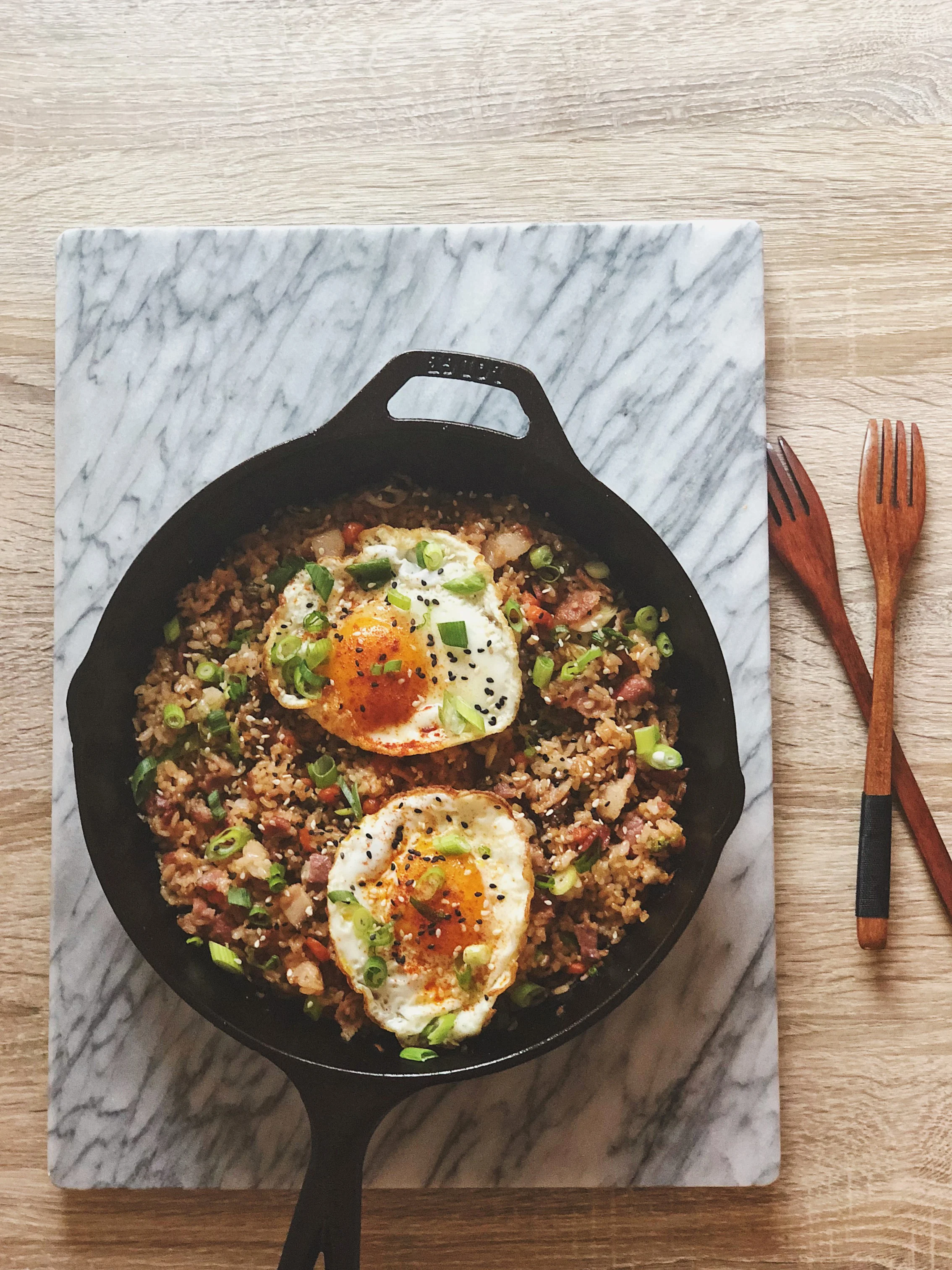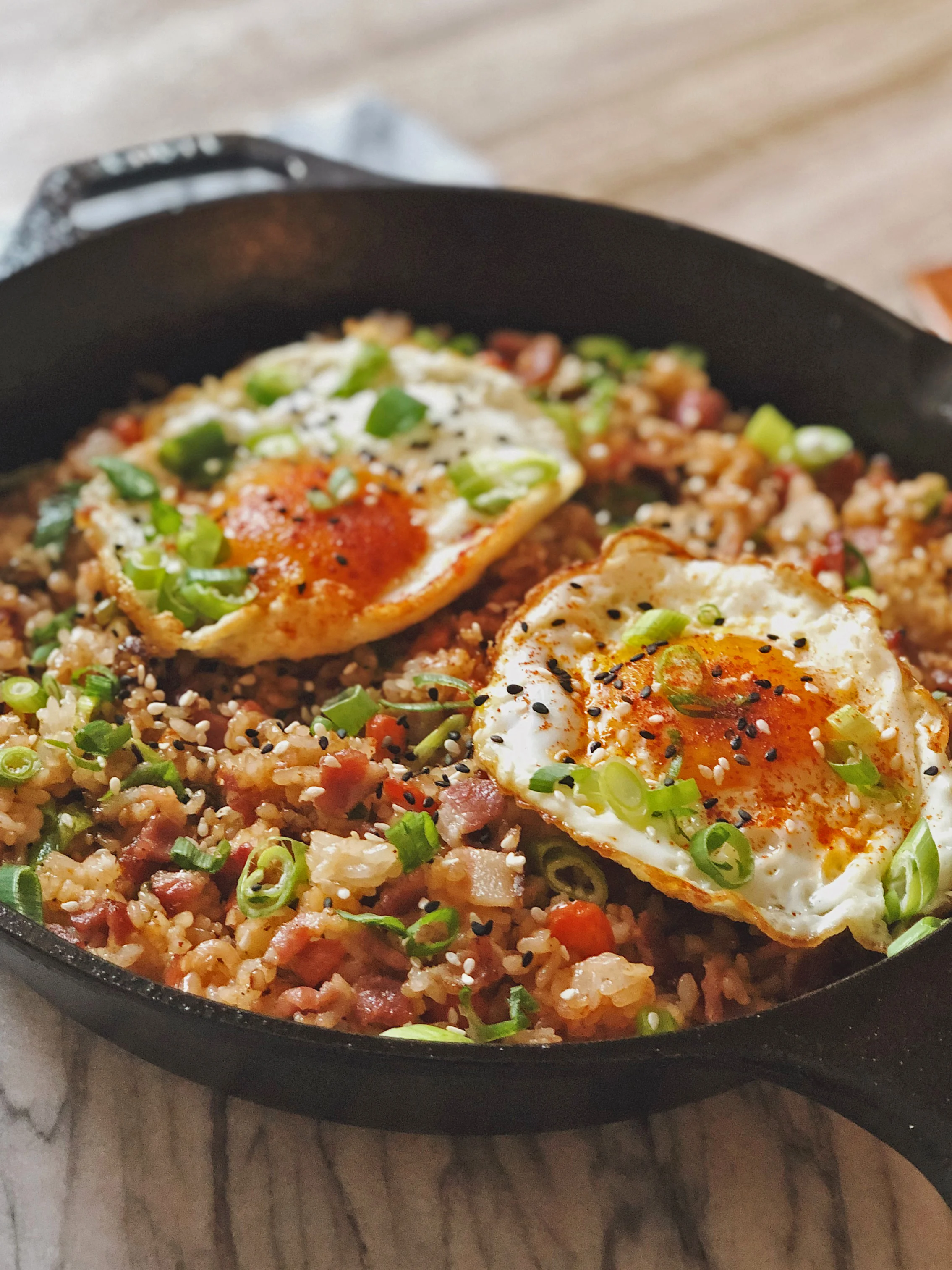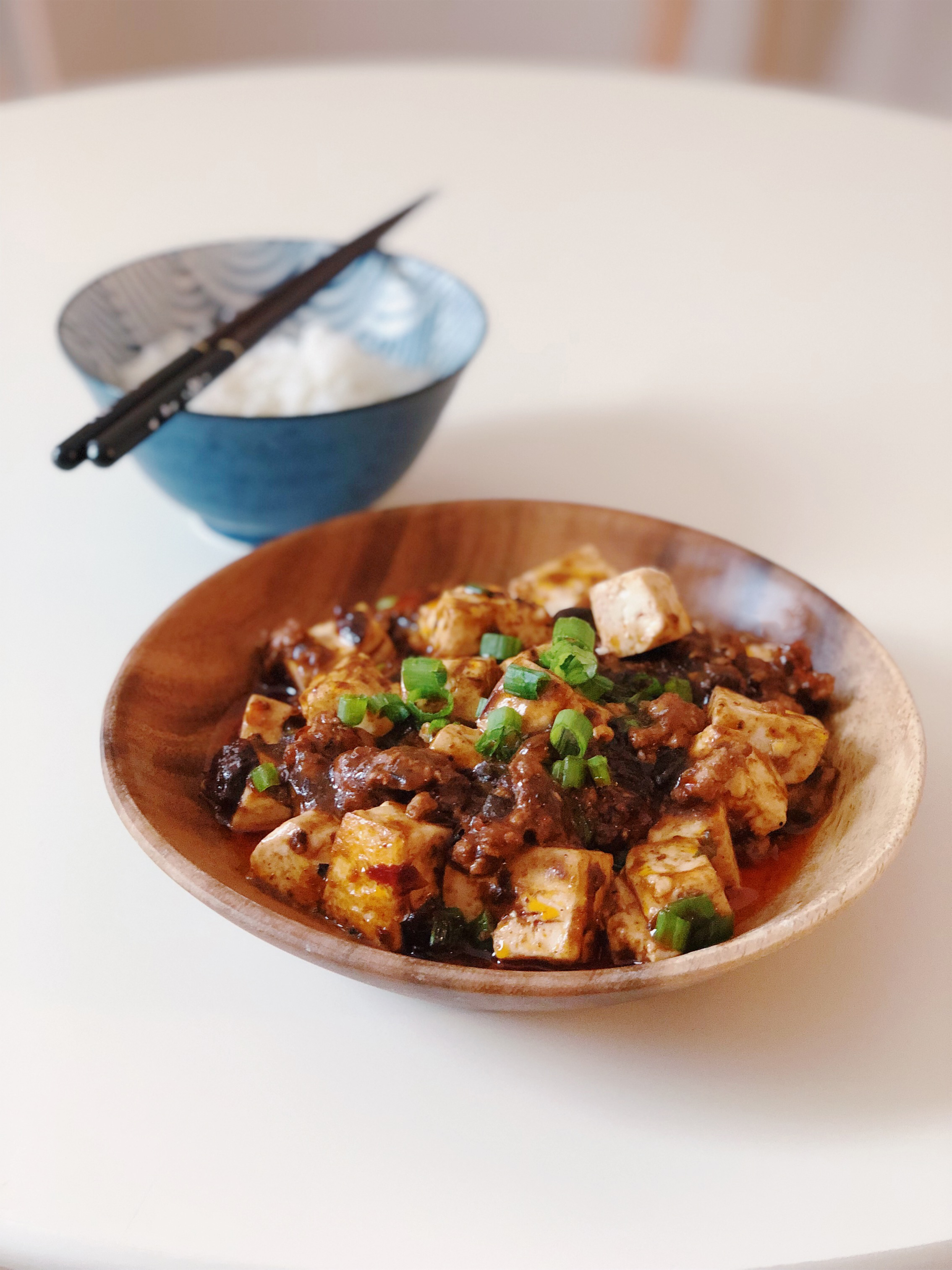Watch the video for a in-depth tutorial on how to make this dish. If you enjoyed watching, please give me a thumbs up/subscribe to me on YouTube!
Shakshuka from the Starbucks Reserve Roastery & Tasting Room in Seattle
Taking the brunch world by storm, Shakshuka is an Israeli dish consisting of eggs poached in tomato sauce and onions. Strangely enough, I first came across this dish at the Pinterest office for breakfast, and then at a trendy brunch place in San Francisco called The Dorian and also at the Starbucks Reserve Roastery & Tasting Room in Seattle. After realizing that the dish only consisted of a tomato sauce, onions, and a chicken or vegetable stock base, I became super motivated to try it out for myself at home.
The thing I love most about Shakshuka is that it’s super flexible: you can easily make it vegetarian, and it’s a meal not limited to breakfast. Because it’s super substantial and savory, it works as the perfect “breakfast for dinner” dish. For my Shakshuka, I added some of my favorite breakfast items: chicken apple sausage and mushrooms. If you’re going vegetarian with this, I recommend adding any vegetable that can withstand the heavy tomato sauce, like zucchini or eggplant. If you want to make a full meal out of it and add some extra protein, I recommend chickpeas or white beans.
Shakshuka with Sausage and Mushrooms
Ingredients (serves 4 people)
- 1 can (12 oz) of tomato sauce
- 4 eggs
- ½ cup sliced mushrooms
- half an onion
- 2 cloves of garlic
- 3 sprigs of thyme
- 2 links of Chicken Apple Sausage
- 1 tsp cumin
- ⅓ cup chicken or vegetable stock
- splash of white wine
- olive oil
- salt and pepper to taste
- feta or parmesan Cheese
- chopped parsley for garnish
- French, Italian, or Pita bread
Takes , Makes enough for 3-4 people.
Instructions
- Chop the onions into small pieces and mince the garlic. Slice the mushrooms and chicken apple sausage so that they are roughly the same size.
- Add olive oil to a frying pan (one that you'd be comfortable serving this dish out of) and lightly sauteé the onions, garlic, and mushrooms. Season with cumin, paprika, salt, and pepper, and add white wine if you have any on hand, making sure it's fully evaporated.
- Add the tomato sauce and chicken stock (or vegetable stock if you're making this vegetarian). Toss in the sprigs of thyme and leave on the stove to simmer for about 3-5 minutes. This is your last chance to mix in salt and pepper to your shakshuka—since we will be adding the eggs right after.
- When the chicken stock has evaporated a bit, create four holes in your sauce to make space for the eggs. Crack each egg into a hole (or, if you're worried about egg shells, you can crack them into a bowl beforehand). Cover the pan for about 1-2 minutes so that the eggwhites cook through, leaving the yolk runny.
- Add parmesan cheese or feta cheese on top to melt. Finally, garnish with chopped parsley.
- For the bread to serve with the shakshuka, I simply sliced them into small pieces and tossed them in olive oil, salt, and pepper. I then popped them in a toaster until they turned golden brown. They'll do a great job of soaking up all the tomato sauce and runny eggs!
Hope you can give this simple recipe a try for breakfast—or any other meal, really! Let me know how it turns out for you by tagging @cinders_zhang on Instagram! Support me by saving this recipe on Pinterest, and subscribing to my Youtube channel :) Have fun in the kitchen!
♥ Cindy



































































